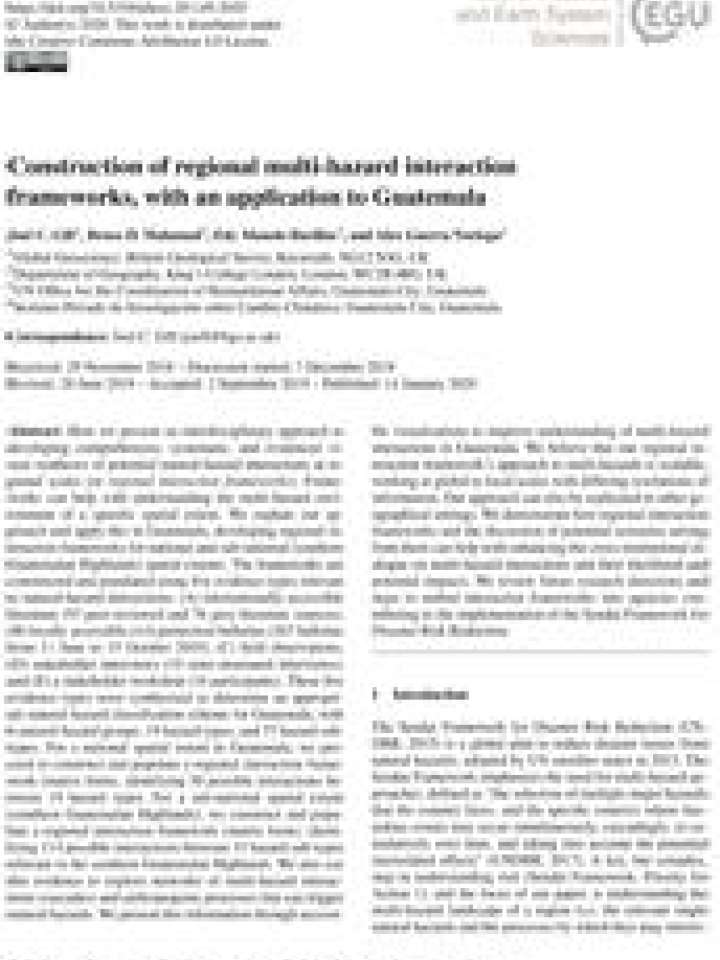Construction of regional multi-hazard interaction frameworks, with an application to Guatemala
This research presents an interdisciplinary approach to developing comprehensive, systematic, and evidenced visual syntheses of potential natural-hazard interactions at regional scales (or regional interaction frameworks). Frameworks can help with understanding the multi-hazard environment of a specific spatial extent. It is explained the approach and apply this in Guatemala, developing regional interaction frameworks for national and sub-national (southern Guatemalan Highlands) spatial extents. The frameworks are constructed and populated using five evidence types relevant to natural-hazard interactions:
(A) internationally accessible literature (93 peer-reviewed and 76 grey-literature sources),
(B) locally accessible civil-protection bulletins (267 bulletins from 11 June to 15 October 2010),
(C) field observations,
(D) stakeholder interviews (19 semi structured interviews), and
(E) a stakeholder workshop (16 participants).
These five evidence types were synthesised to determine an appropriate natural-hazard classification scheme for Guatemala, with 6 natural hazard groups, 19 hazard types, and 37 hazard subtypes. For a national spatial extent in Guatemala, a regional interaction framework (matrix form) was constructed, identifying 50 possible interactions between 19 hazard types. For a sub-national spatial extent (southern Guatemalan Highlands), it was constructed a regional interaction framework (matrix form), identifying 114 possible interactions between 33 hazard sub-types relevant in the southern Guatemalan Highlands. This evidence was also used to explore networks of multi-hazard interactions (cascades) and anthropogenic processes that can trigger natural hazards. This research presents this information through accessible visualisations to improve understanding of multi-hazard interactions in Guatemala. This approach can also be replicated in other geographical settings. It is demonstrated how regional interaction frameworks and the discussion of potential scenarios arising from them can help with enhancing the cross-institutional dialogue on multi-hazard interactions and their likelihood and potential impacts. A review of future research directions and steps to embed interaction frameworks into agencies contributing to the implementation of the Sendai Framework for Disaster Risk Reduction.
Explore further
